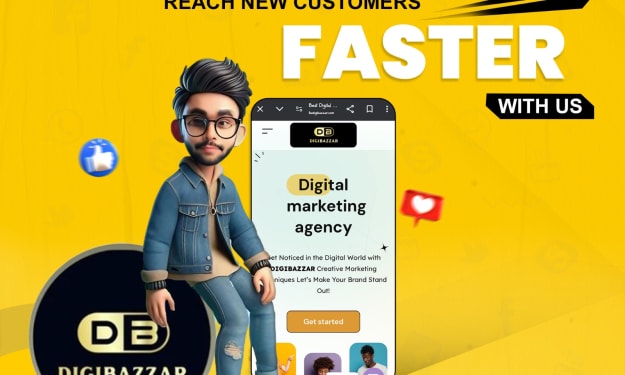What is headless commerce and how does it work
Let's discuss about headless e-commerce and why it's getting more popular in e-commerce industry

In the age of eCommerce, customers crave convenience more than ever before. As such, retailers have had to stay ahead of the curve when it comes to offering them a streamlined shopping experience with quick checkout times and an intuitive online store. Enter headless commerce – a way for brands to decouple their front-end customer experiences from their back-end systems – which is revolutionizing how companies approach digital retailing. In this post, we will delve into what headless commerce is, why it’s becoming so popular and what benefits adopting it can bring you.
What is headless commerce and how does it work
Headless commerce is a rapidly growing trend in ecommerce that allows businesses to decouple their front-end from their back-end systems. This enables businesses to have greater flexibility and control over their user experience, while still being able to leverage the power of their existing back-end infrastructure. Headless commerce can be used to power everything from traditional ecommerce websites to mobile apps and voice-assisted ecosystems such as Amazon Alexa and Google Home.
In a headless commerce setup, the front-end system is separate from the back-end system that powers the actual ecommerce functionality. This separation allows businesses to build their front-end using any technology they want, without being constrained by the back-end. For example, a business could use React on the front-end and Shopify on the back-end, or vice versa. Or they could use a headless CMS such as Contentful or Prismic on the front-end, with any number of back-ends powering the ecommerce functionality.
The possibilities are endless. Headless commerce also allows businesses to have complete control over their user experience. With traditional ecommerce setups, the user experience is often reliant on UI components provided by the back-end system. With headless commerce, businesses can build their own UI components from scratch, or use existing UI components from other sources.
This gives businesses complete control over how their users interact with their ecommerce site or app. Headless commerce is powered by APIs (Application Programming Interfaces). These APIs expose the back-end functionality of an ecommerce platform to the front-end, allowing it to be used in any way that the business desires. One of the benefits of using APIs is that they provide a consistent interface regardless of which back-end system is being used.
The benefits of headless commerce for businesses
In recent years, there has been a growing trend towards headless commerce. Put simply, this involves decoupling the front-end of a website from the back-end, allowing businesses to have greater flexibility when it comes to design and user experience. There are a number of benefits associated with headless commerce, which is why it is becoming increasingly popular with businesses of all sizes.
One of the key advantages is that it allows businesses to deliver a personalized user experience. Without the need to rely on a traditional eCommerce platform, businesses are free to use the latest technologies and platforms to create a truly unique customer journey. This can be particularly beneficial for businesses that are looking to stand out in a crowded market.
Another advantage of headless commerce is that it enables businesses to roll out new features and updates much faster. With the front-end and back-end being independent, there is no need to wait for an eCommerce platform to release an update before making changes to the website. This can give businesses a real competitive advantage when it comes to innovation. Finally, headless commerce can also lead to reduced costs.
By avoiding the need to license an eCommerce platform, businesses can save significant amounts of money in the long run. Headless commerce is certainly a trend that is worth keeping an eye on for any business that wants to stay ahead of the curve.
How to get started with headless commerce?
Headless commerce is a growing trend in ecommerce, and it offers a number of advantages for businesses. In a headless system, the front-end of the website is decoupled from the back-end, allowing for greater flexibility and scalability. In addition, headless systems make it easier to integrate with third-party platforms and services.
If you're thinking about adopting headless commerce for your business, there are a few things to keep in mind. First, you'll need to choose a suitable back-end platform. Second, you'll need to select a front-end framework that will work well with your chosen back-end.
Finally, you'll need to put in place the necessary integrations to ensure smooth data flow between the front-end and back-end of your system. With careful planning and execution, headless commerce can help take your business to the next level.
Examples of businesses that are using headless commerce successfully
There are a number of businesses that are successfully using headless commerce. One example is Burberry, which has implemented a headless commerce solution in order to better meet the needs of its customers.
The company has been able to create a more personalized and seamless customer experience, resulting in increased sales and satisfaction. Another example is Macy's, which has used headless commerce to improve the efficiency of its online order fulfillment.
The company has seen a significant reduction in fraudulent activity and has also been able to provide customers with a more consistent experience across all channels. Finally, Toys "R" Us has used headless commerce to streamline its online operations. The company has reduced its overall costs and has also improved its customer service levels.
These are just a few examples of businesses that are using headless commerce successfully. As the benefits of this approach become more widely recognized, it is likely that even more businesses will make the switch to this type of solution.
Conclusion
Headless commerce provides many opportunities for businesses to improve their customer experience. However, it is important to consider the tradeoffs before implementing a headless strategy. Headless commerce can be complex and difficult to implement, but the benefits may outweigh the costs for your business.
About the Creator
vijay kumar
Motivated eCommerce specialist with a proven track record of success in analyzing and improving customer experience.implementing new digital marketing campaigns, and producing original content.
Enjoyed the story? Support the Creator.
Subscribe for free to receive all their stories in your feed. You could also pledge your support or give them a one-off tip, letting them know you appreciate their work.






Comments
There are no comments for this story
Be the first to respond and start the conversation.